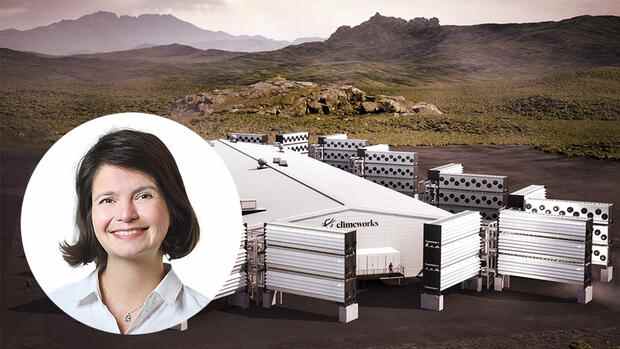In the fight against the climate crisis, turning away from fossil fuels alone is no longer enough. Rather, some of the greenhouse gases that continue to be emitted will have to be offset by removing CO2 from the atmosphere.
The extent of the necessary withdrawals can be limited by progress in climate protection. It is not only a question of decarbonizing the energy supply, but also of curbing the demand for energy – through changes in behavior in mobility, housing and nutrition.
However, the latest reports from the Intergovernmental Panel on Climate Change clearly show that it is now too late to achieve the climate targets set by the international community in the Paris Agreement without any CO2 removal.
So what technologies are available for removing the CO2 from the atmosphere? In Germany and some other European countries, the main focus is on the so-called land sinks, i.e. forests, soils and moors.
The tacit assumption is: These land sinks can be enlarged to the extent that residual emissions still occur after extensive climate protection measures. The CO2 can be removed, for example, through reforestation or through agricultural practices that increase the soil carbon content.
Two technologies can extract CO2 from the atmosphere and store it in the long term
These land-based or often also called near-natural practices enjoy great public acceptance – mostly in connection with positive side effects on other ecosystem services, for example in connection with biodiversity.
In addition, the costs are manageable and there is a wealth of experience and technical know-how. In particular, countries such as Sweden or Austria can benefit from decades of experience.
However, in view of limited land areas and also naturally limited saturation processes, the question of scalability arises. In addition, in view of the progressing climate change and a greater frequency of extreme weather events, droughts, forest fires and pest infestations, it is questionable whether the CO2 will remain bound long enough to compensate for residual emissions in the long term.
For these reasons, one must also talk about other options such as the use of biochar or the acceleration of natural weathering processes. In particular, two technologies that rely on geological storage of CO2 should be highlighted.
>> Read here: Forests, moors, bodies of water – Environment Minister Lemke presents the natural climate protection action program
With one technology, the climate gas is stored in biomass beforehand. When it is converted to electricity or biofuel, it is released again and then captured and stored (BECCS – Bio Energy with Carbon Capture and Storage). In the other, it is filtered directly from the air using a chemical process (DACCS – Direct Air Carbon Capture and Storage).
With these two technologies, the CO2 can be stored for a long time. But they are currently still expensive, especially DACCS.
In addition, the idea of storing CO2 underground is met with skepticism in many places. After all, Norway, Great Britain and the Netherlands are already counting on the fact that storage facilities will become necessary and are investing in excess storage capacity in the North Sea.
Example Sweden: there are already auctions for CO2 withdrawals
In this context, it is important to look at the USA. With the gigantic “Inflation Reduction Act” climate package passed in August, America has once again demonstrated that it likes to make big things when it comes to popular topics of the future.
>> Read also: Amazon forest deforestation at an extreme for October
The DACCS technology in particular, which filters out and stores CO2, will receive a massive boost from the lavish flow of funding. Europe’s traditionally technologically strong industrial nations should not let themselves be left behind by concentrating exclusively on land-based measures.
Scenarios from science show very clearly that if we limit ourselves too much in the portfolio of technologies used, the result will be both higher climate protection costs and less sustainable CO2 removal.
For a sufficient scaling of extraction technologies, however, a clear price signal for CO2 is needed: It must become more expensive to release greenhouse gas into the atmosphere – and conversely, negative CO2 prices must make it lucrative to retrieve greenhouse gas.
So far, the CO2 removal business has only been a market niche. The well-known Swiss air filter company Climeworks, for example, sells the extracted CO2 to other branches of industry – for example to greenhouses, which of course does not mean permanent storage.
>> Read also: More climate protection – EU agreement on CO2 diet through forests and soils
To cope with the large amounts of greenhouse gas removals that need to be realized by mid-century if the EU wants to be climate neutral, completely new business models have yet to be developed.
Politics is required here. The Swedes are leading the way in which direction it could go. They are already organizing auctions – and auctioning off the orders for the CO2 removals that will be necessary in the future to those companies that can complete the order at the lowest cost.
The author:
Sabine Fuss is a climate economist at the Berlin climate research institute MCC (Mercator Research Institute on Global Commons and Climate Change). She is also a professor at the Humboldt University in Berlin.
More: Hope for the planet – Norway wants to ban Europe’s climate poison
